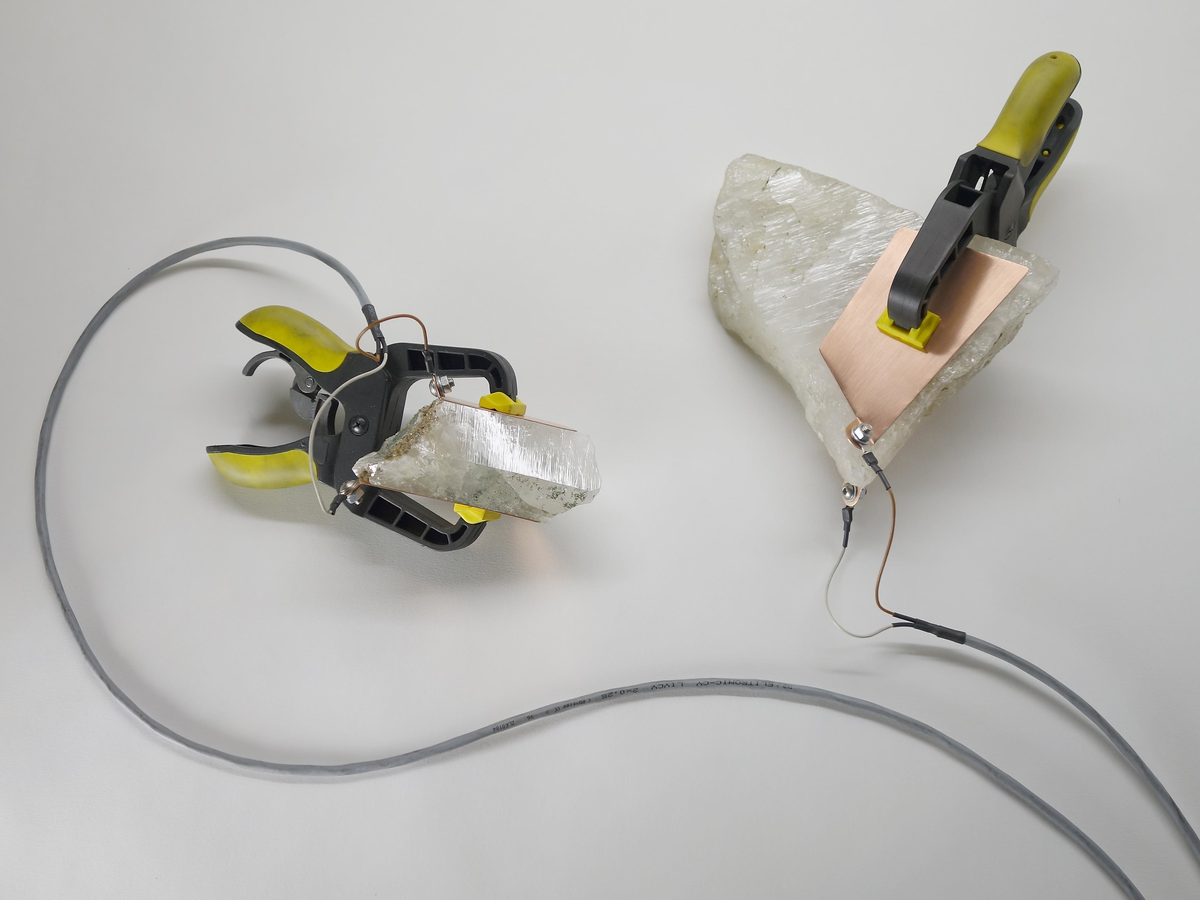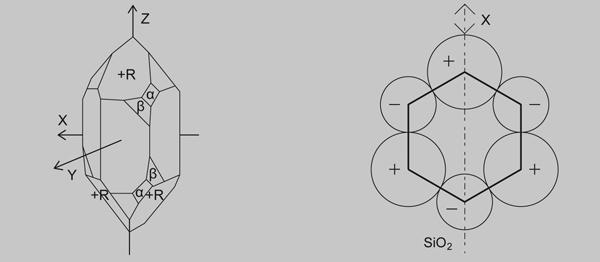Electroacoustic methods are characterized by linking the physical and the electric. Electroacoustic transduction – the conversion of physical vibrations into electrical signals or vice versa – is the interfacing juncture between earthly vibrations and electronically induced fluctuations. But the split between the so-called 'terrestrial' and the 'technical' is not so clear-cut: circuits themselves incorporate little bits of minerals exploited for their electrical properties such as copper (an electrical conductor), mica (an electrical capacitor) or raw pyrite and galena crystals used as rectifiers in early radio receivers (crystal radios), not to mention an abundance of neodymium found in loudspeakers and headphone magnets.
Conversely electrical signals themselves can be found in the Earth's surface and surrounding atmosphere. For example, the air itself serves as a giant dielectric, insulating electrical differentials in clouds, atmosphere and ground. Bolts of lighting display tensions of that earth-atmosphere circuit, whose thundering applause -- approximately 50 strikes per second (globally) -- send acoustic ripples back through charged vapors and whose emissive discharge itself continues propagating in a secondary electrical circuit, recursively patched from earth to ionosphere and back again.
The makeup of geological matter can be defined though ranges of resistivity. Various rocks and soil types produce variations in conductivity through which earth currents heterogeneously traverse. In certain instances the earth itself acts as an electric battery where electro-chemical procedures of mineral compounds (and bacteria) in the ground instill gradual electron flows between adjacent -- yet alternately charged -- portions of the soil. Phenomena such as 'forest rings' have been described in such soil-circuitry terms.
Even transduction has natural precedents with quartz serving as earth's primary microphone. Quartz crystals exhibit pressure-electric properties through the organization of silicon and oxygen in the crystal lattice structure. That structure produces electrical charge proportional to the pressure exerted upon it. This quality was recognized in the late 19th century (the Curie brothers discovery of piezoelectricity in 1880) and soon after utilized in raw crystal form in a microphone design for submarine detection. Electronic applications of quartz since WWII define it as the keystone of modern communication, due to its ability to produce stable, predictable, frequency oscillations. In this case reverse transduction is applied to the crystal by electronically exciting it into sustained vibratory resonance. This tuning capacity of precision milled quartz carries over from tactical radio communication into civilian broadcasting, ending up crammed -- literally in the shape of miniature tuning forks -- on the circuit board of quartz wristwatches.
Phased-array geolectric prospecting, oil and gas exploration. A prospecting method known as 'the piezoelectric method' measures changes in electrical output of rocks, activated by explosives, to determine underlying mineral structures in the bedrock.
Quartz Attention, work-in-progress 2018
Microphones with piezoactive quartz crystals
Eastern Alps quartz, copper plates, electrical cables, clamping tool
Left: Crystal Radio circuit diagram
Right: Crystal Radio Detector with galena crystal rectifier
Adapted from Lewis T. M., How to Become a Wireless Operator, Popular Science Monthly, Sept., 1916, pp. 449-452
Quartz molecular structure conducive of the piezoelectric effect and a quartz crystal indicating primary piezoelectric axes in the crystal (after W. Voigt, Lehrbuch der Kristallphysik, 1910)





